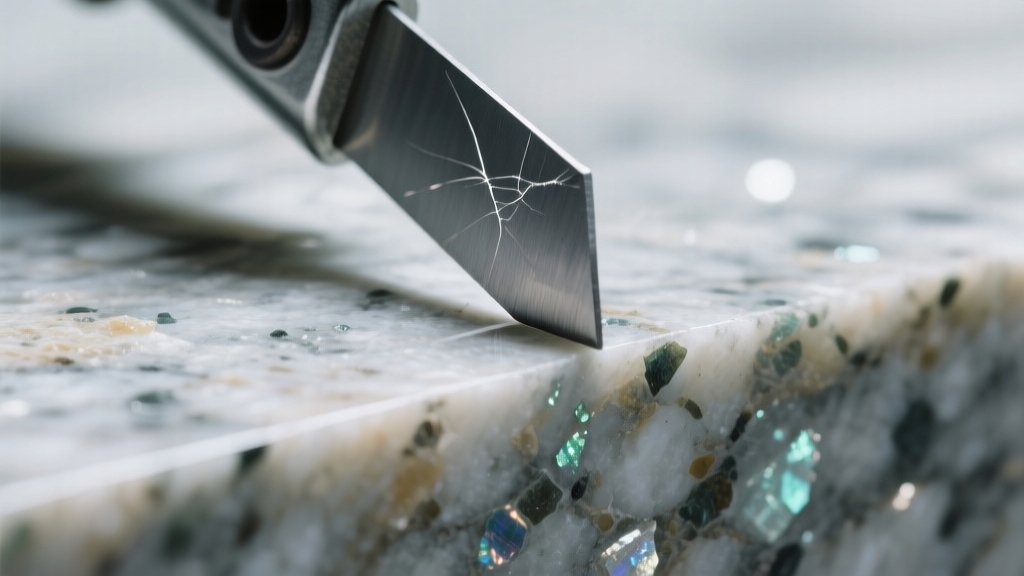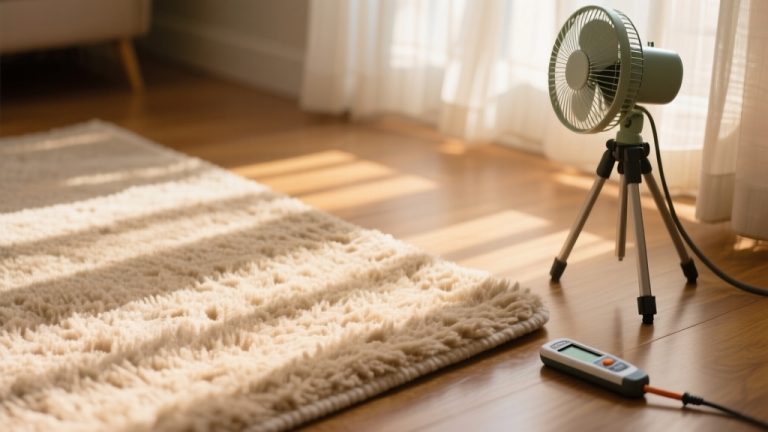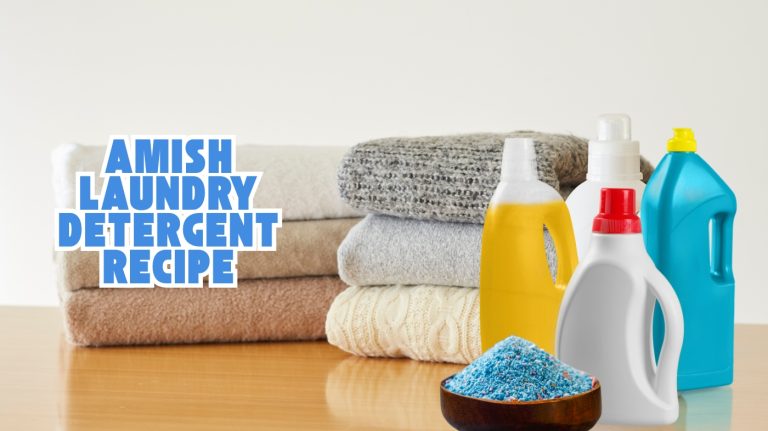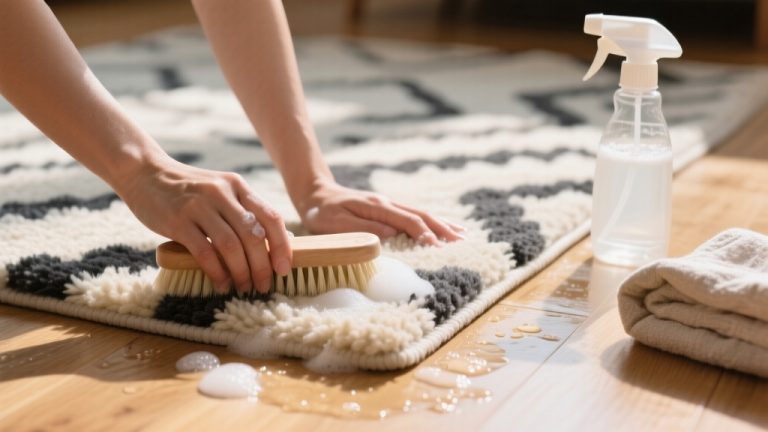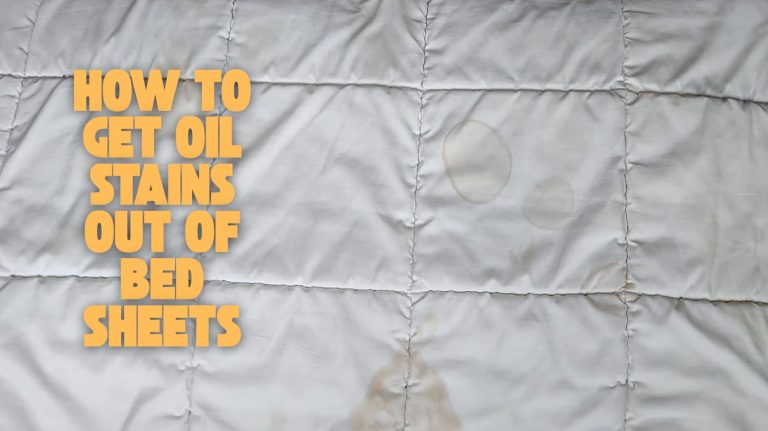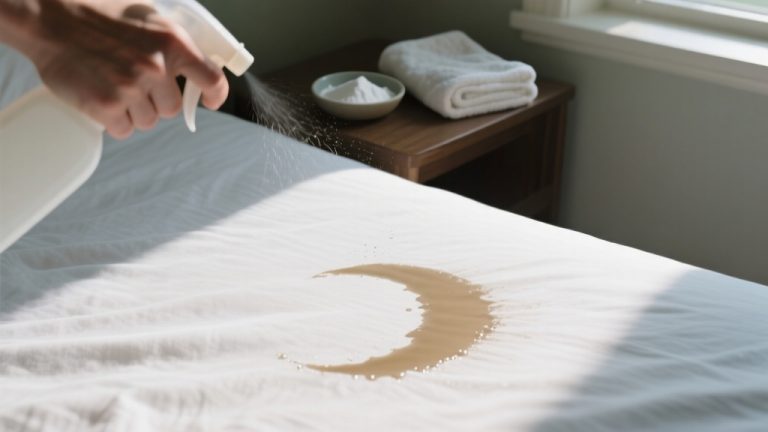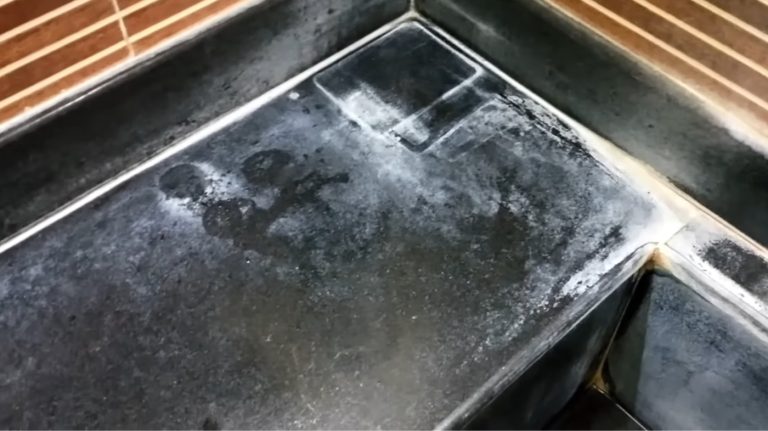Does Granite Scratch: Protecting Granite’s Natural Beauty
Granite rates 6 to 7 on the Mohs scale, making it highly scratch-resistant but not scratch-proof. You’ll avoid most marks with proper care, especially if you seal the surface regularly to protect its natural pores.
Polished finishes may reveal scratches more easily, while honed or leathered textures hide them better. Compared to quartz, granite’s natural fissures can increase vulnerability. If you want to understand how finish, maintenance, and material properties affect granite’s durability, keep exploring.
Key Takeaways
- Granite rates 6-7 on the Mohs scale, making it highly resistant but not completely scratch-proof.
- Natural fissures in granite create weak spots that can increase local scratch susceptibility.
- Proper sealing reduces granite’s porosity, helping prevent scratches and surface damage.
- Sharp objects and abrasive materials can scratch granite despite its hardness.
- Surface finish affects scratch visibility; polished granite shows scratches more clearly than honed or leathered finishes.
Understanding Granite’s Hardness on the Mohs Scale
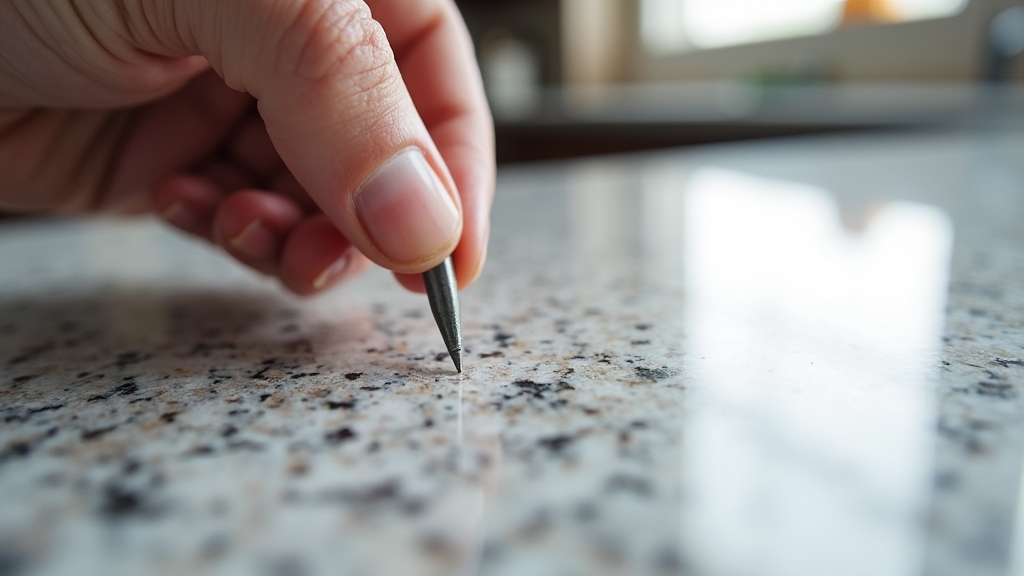
Although granite’s hardness varies slightly with mineral composition, it consistently ranks between 6 and 7 on the Mohs scale, reflecting its notable scratch resistance. The Mohs scale quantifies hardness by evaluating a material’s ability to scratch or be scratched, with 1 being talc (softest) and 10 diamond (hardest).
Granite’s hardness stems from its quartz and feldspar content, both possessing high intrinsic hardness. When you test granite against other materials, you’ll find it resists scratches from anything rated below 6. This makes granite a preferred choice for many buyers due to its material resilience.
However, just as certain oven components require careful cleaning to avoid damage, granite surfaces should be maintained properly to preserve their durability and longevity. This positions granite above stones like marble and soapstone but below quartzite and diamond.
Understanding this scale enables you to predict granite’s performance in wear-intensive environments, highlighting its durability and appropriateness for surfaces subjected to mechanical abrasion. The precise mineralogical composition dictates minor hardness fluctuations, but standardized scratch tests confirm granite’s consistent toughness.
How Surface Finish Influences Scratch Visibility?
You’ll notice that polished granite surfaces reveal scratches more sharply due to their reflective gloss. While honed finishes diffuse light and mask minor abrasions.
Surface scratches are minor, caused by daily use like cutting directly on the surface, while deeper scratches penetrate further, making them more visible and harder to repair. Leathered textures create a unique interplay with scratches, balancing visibility through subtle surface irregularities.
Understanding how different surface treatments alter light reflection and texture helps you predict and manage scratch appearance effectively. This knowledge is important because surface scratches can worsen over time if not properly addressed.
Increasing ventilation in the area can help prevent buildup of residue that might exacerbate scratch visibility and surface damage.
Polished vs Honed Scratch Visibility
When comparing polished and honed granite, the surface finish significantly affects how scratches appear.
Polished granite’s high-gloss surface reflects light sharply, making scratches and surface irregularities highly visible, especially on lighter stones where gloss contrasts with abrasions. This finish enhances natural patterns but also highlights wear.
Additionally, polished granite is often chosen for high-traffic areas due to its ease of maintenance and durability. The use of abrasion-resistant materials in granite can also impact how well the surface withstands scratches.
In contrast, honed granite’s matte texture diffuses light, effectively concealing minor scratches and surface blemishes. Its satin finish darkens lighter stones, helping to camouflage imperfections.
However, honed surfaces are slightly more porous and need frequent sealing to prevent staining, though this doesn’t increase scratch visibility. Polished granite requires less maintenance but reveals scratches more readily. These scratches can often be mitigated by re-polishing.
Leathered Finishes and Scratches
Since leathered granite lacks the high-gloss seal of polished finishes, it can scratch more readily under abrasive conditions.
However, its tightened pore structure limits deep scratch penetration, while the textured matte surface diffuses light, concealing minor abrasions effectively. This finish is achieved through a meticulous grinding process using a diamond-tipped brush, giving the stone its distinctive textured matte finish.
Regular maintenance and proper care with non-abrasive cleaners help preserve its appearance and reduce damage. You’ll find that fingerprints and smudges are also less visible compared to polished or honed finishes.
Although scratches from cutting or dragging rough objects can occur, they appear less conspicuous. Proper care, like avoiding abrasive tools, helps maintain the surface.
Surface Treatment Effects
Although all granite finishes offer some degree of scratch resistance, the surface treatment substantially influences how visible those scratches become.
Polished granite’s glossy finish reflects light uniformly, masking minor scratches unless they disrupt the surface shine. It is also the most stain-resistant finish due to its sealed pores, making it highly durable in daily use. Regular polishing with fine grit pads can restore and enhance this gloss, further reducing scratch visibility.
In contrast, honed granite’s matte texture lacks this reflective quality, making scratches more apparent as lighter lines. Caressed finishes combine polished highlights with textured areas, reducing scratch visibility better than honed but not as effectively as polished granite.
Matte finishes emphasize scratches due to uneven light scattering, often showing bright lines against dull backgrounds. Textured surfaces can conceal minor abrasions but may trap debris that worsens scratching if neglected. Proper maintenance including routine polishing and sealing is essential to preserve appearance and minimize wear.
Comparing Granite and Quartz Scratch Resistance
When you compare granite and quartz on the Mohs hardness scale, quartz consistently rates at 7, slightly harder than granite’s 6 to 7 range.
Granite’s natural fissures create weak spots that increase scratch susceptibility, while quartz’s engineered surface maintains uniform hardness and scratch resistance. Proper maintenance, including avoiding abrasive cleaners, helps preserve the surface integrity of both materials.
Quartz surfaces are also non-porous, making them resistant to stains and scratches and requiring minimal maintenance, which contributes to their overall durability. non-porous surface Understanding these differences helps you evaluate which material better suits your durability needs.
Mohs Hardness Comparison
While granite and quartz are both popular choices for countertops, their scratch resistance varies due to differences in Mohs hardness ratings.
Quartz rates at 7, making it slightly harder and more scratch-resistant than the average granite, which typically rates around 6 to 6.5. Some granite types reach hardness 7 but generally remain softer than quartz. Here’s a concise comparison:
| Property | Granite | Quartz |
|---|---|---|
| Mohs Hardness | 6–6.5 (up to 7) | 7 |
| Scratch Resistance | Good | Superior |
| Maintenance Impact | Requires sealing | No sealing needed |
You’ll find quartz better withstands sharp abrasions, but granite’s toughness still suits everyday use well. Additionally, granite’s natural composition includes minerals like feldspar and quartz, contributing to its unique aesthetic characteristics.
Natural Fissures Impact
Because granite contains natural fissures, microscopic features formed under intense pressure and heat, you’ll find localized areas where scratch resistance can be compromised.
These fissures, unlike cracks, don’t alter the surface plane but create weak points prone to minor scratches, especially under sharp objects or direct cutting. Granite is composed of minerals like quartz, feldspar, and micas, which contribute to its overall hardness and durability.
Mineral composition These natural variations also influence the maintenance required compared to engineered surfaces like quartz, which simplifies cleaning and care due to its consistent structure. While granite rates 6-7 on the Mohs scale, these fissure zones reduce local hardness, making scratches more likely in those spots.
In contrast, quartz’s engineered composition lacks fissures, providing more uniform and higher scratch resistance. Additionally, quartz’s non-porous surface means it does not require sealing, unlike granite, helping maintain its scratch resistance and appearance over time.
Although granite maintains overall durability, you should use cutting boards to protect fissure-affected areas. Regular sealing further prevents damage by limiting liquid penetration into fissures.
Engineered Surface Uniformity
Natural fissures in granite create localized weaknesses that affect its scratch resistance, but the overall surface uniformity plays a more significant role when comparing granite to engineered materials like quartz.
Regular maintenance and sealing are essential to preserving granite’s integrity and minimizing surface damage over time, similar to how equipment maintenance is crucial in other contexts.
Quartz offers consistent hardness across its surface, generally rated around 7 on the Mohs scale, slightly harder than granite’s variable 6 to 7. This uniformity, combined with integrated resin binders, enhances quartz’s toughness and abrasion resistance.
Granite’s natural variability and porous composition necessitate regular sealing to maintain scratch resistance, which can degrade over time if neglected. Additionally, quartz surfaces are typically polished to a smooth, less porous finish, improving durability against scratches compared to granite’s often varied finishes.
Therefore, quartz’s engineered uniformity provides more predictable and stable scratch resistance under mechanical stress than granite’s natural, uneven surface. Quartz’s low-maintenance nature also means it requires only regular cleaning with mild soap, avoiding harsh chemicals that might compromise its scratch resistance.
Natural Factors That Affect Granite’s Durability
When you examine granite’s durability, its geological composition and crystal structure play a critical role. Formed from slow-cooled magma, granite’s primary minerals—quartz, feldspar, and mica—create a dense, interlocking matrix that enhances hardness and toughness.
Quartz notably increases scratch resistance, while the crystal bonds reduce cracking and chipping risks. Regular cleaning with appropriate cleaning tools helps maintain granite’s surface without causing damage.
Granite’s durability stems from its dense, interlocking minerals formed during slow magma cooling.
Additionally, granite’s formation under intense heat grants it natural thermal stability, allowing it to withstand high temperatures without damage. Its natural mineral structure and finishing also contribute to excellent moisture resistance.
Its moderate porosity requires sealing to prevent liquid absorption and chemical etching from acidic substances, which can degrade the surface if neglected. Proper maintenance, including routine sealing and pH-neutral cleaning, preserves granite’s integrity.
Common Causes of Scratches on Granite Countertops
Although granite boasts impressive hardness, several common factors can cause scratches that compromise its surface integrity. Direct contact with sharp objects, like knives or dropped keys, can produce visible scratches despite granite’s Mohs hardness of 7, especially with repeated cutting without a protective board.
Heavy or abrasive impacts, such as dropping pots or dragging equipment, cause surface marks or chips, particularly near edges. Exposure to acidic substances and harsh chemicals dull and etch the stone, mimicking scratches by degrading sealers.
Daily wear from metal cutlery contact and abrasive particles gradually abrades the surface, while improper cleaning with abrasive pads or harsh chemicals roughens the polish and increases vulnerability. Understanding these causes is vital to maintaining granite’s durability and aesthetic quality over time.
Best Practices to Prevent Scratches on Granite
To preserve the integrity of your granite countertops, you should adopt proactive measures that prevent scratches before they occur.
Always use cutting boards to avoid direct knife contact and place mats or trivets under hot cookware to shield against abrasion and heat. Avoid sliding heavy or sharp objects; lift them instead to prevent surface damage.
Clean regularly with pH-balanced, non-abrasive cleaners and soft microfiber cloths to remove grit without harming the stone. Granite’s heat, scratch, and stain resistance make it durable, but proper maintenance is still essential. Wipe spills promptly, especially oily or acidic substances, to prevent residue buildup that may cause scratches.
Organize items in trays and apply felt pads beneath decorative objects to minimize friction. Properly storing sharp tools and avoiding physical stress like standing on countertops further protects your granite, maintaining its durability and aesthetic appeal.
Role of Sealing in Granite Maintenance
Why does sealing play a essential role in granite maintenance? Granite’s natural porosity allows liquids, oils, and bacteria to penetrate its surface if unsealed, leading to stains and degradation.
By applying a penetrating sealant, you create a protective barrier that reduces absorbency without altering granite’s appearance. This barrier prevents common kitchen stains like oil and coffee and inhibits bacterial growth by closing microscopic pores.
Sealants act as a protective barrier on granite surfaces to reduce the stone’s absorbency and protect against moisture and potential stains. To ensure effective sealing, clean the granite thoroughly, apply the sealant evenly, allow it to penetrate for about 20 minutes, then wipe off excess and let it cure for 24-48 hours.
Regular resealing, typically annually, preserves the stone’s integrity, enhances cleanability, and maintains its natural shine. Without sealing, granite remains vulnerable to etching, staining, and accelerated wear, compromising both hygiene and longevity.
Additional Durability Benefits Beyond Scratch Resistance
While granite is widely recognized for its scratch resistance, its durability extends considerably beyond this attribute. You benefit from its exceptional heat resistance, withstanding temperatures up to 1200°F (649°C) due to its interlocking crystal structure.
This exceptional heat resistance makes granite ideal for high-use, high-heat environments such as busy kitchens and outdoor cooking areas. Granite also offers strong stain and chemical resistance when properly sealed and delivers longevity through high compressive strength and impact tolerance.
Frequently Asked Questions
Can Granite Scratches Be Professionally Repaired or Polished Out?
Yes, you can have granite scratches professionally repaired or polished out. Experts use diamond abrasive pads and resin diamonds to grind and polish the surface precisely, restoring its original gloss without causing damage.
For deep scratches, they apply color-matched epoxy followed by grinding and polishing to seamlessly blend repairs. Their specialized tools and techniques guarantee durable, flawless results, often backed by lifetime guarantees—something DIY methods can’t reliably achieve.
How Long Does Granite Typically Maintain Its Scratch Resistance?
Think of granite’s scratch resistance like a knight’s armor. It can last 25 to 50+ years with proper upkeep. You’ll need to reseal every 1–3 years to keep that armor intact against stains and wear.
High-quality, polished granite holds up longer, but heavy kitchen use and harsh cleaners can wear it down. With timely maintenance and occasional professional polishing, you can preserve its tough surface for decades, ensuring lasting durability.
Are There Specific Granite Types More Prone to Scratching?
Yes, you’ll find that light-colored granites with higher feldspar or mica content tend to be more prone to scratching. Exotic granites featuring larger crystal formations can also show uneven hardness, increasing localized scratch risk.
In contrast, dense black granites like absolute black resist scratches better due to tight grain structure. When selecting granite, consider mineral composition and grain size to gauge its scratch susceptibility accurately.
Does Granite Scratch Resistance Change With Age or Use?
You can expect granite’s scratch resistance to stay around a solid 6-8 on the Mohs scale throughout its lifespan. Its mineral hardness doesn’t degrade with age, so the stone itself won’t become more susceptible to scratches.
However, repeated use and surface wear can dull the finish, making scratches more visible. Maintaining the seal and avoiding harsh cleaning preserves its protective barrier, keeping scratch resistance effectively unchanged over time despite routine wear.
Can Granite Countertops Be Resurfaced After Deep Scratches?
Yes, you can resurface granite countertops after deep scratches. However, deep scratches require professional resurfacing because it involves grinding away a thin stone layer, filling any deep gouges with epoxy resin, and polishing the surface to restore its integrity and appearance.
DIY methods risk further damage due to granite’s hardness and the precision needed. After resurfacing, sealing the granite is essential to protect it from future damage and stains.
Balancing Beauty and Practicality: Maintaining Your Granite Countertops
Granite rates around 6-7 on the Mohs scale, meaning it resists most everyday scratches but isn’t completely scratch-proof. Interestingly, quartz scores higher at about 7, making it slightly more scratch-resistant.
You’ll want to think about surface finish and sealing to enhance durability and reduce visible marks. By understanding these factors, you can better protect your granite countertops and maintain their integrity over time, balancing natural beauty with practical performance.

